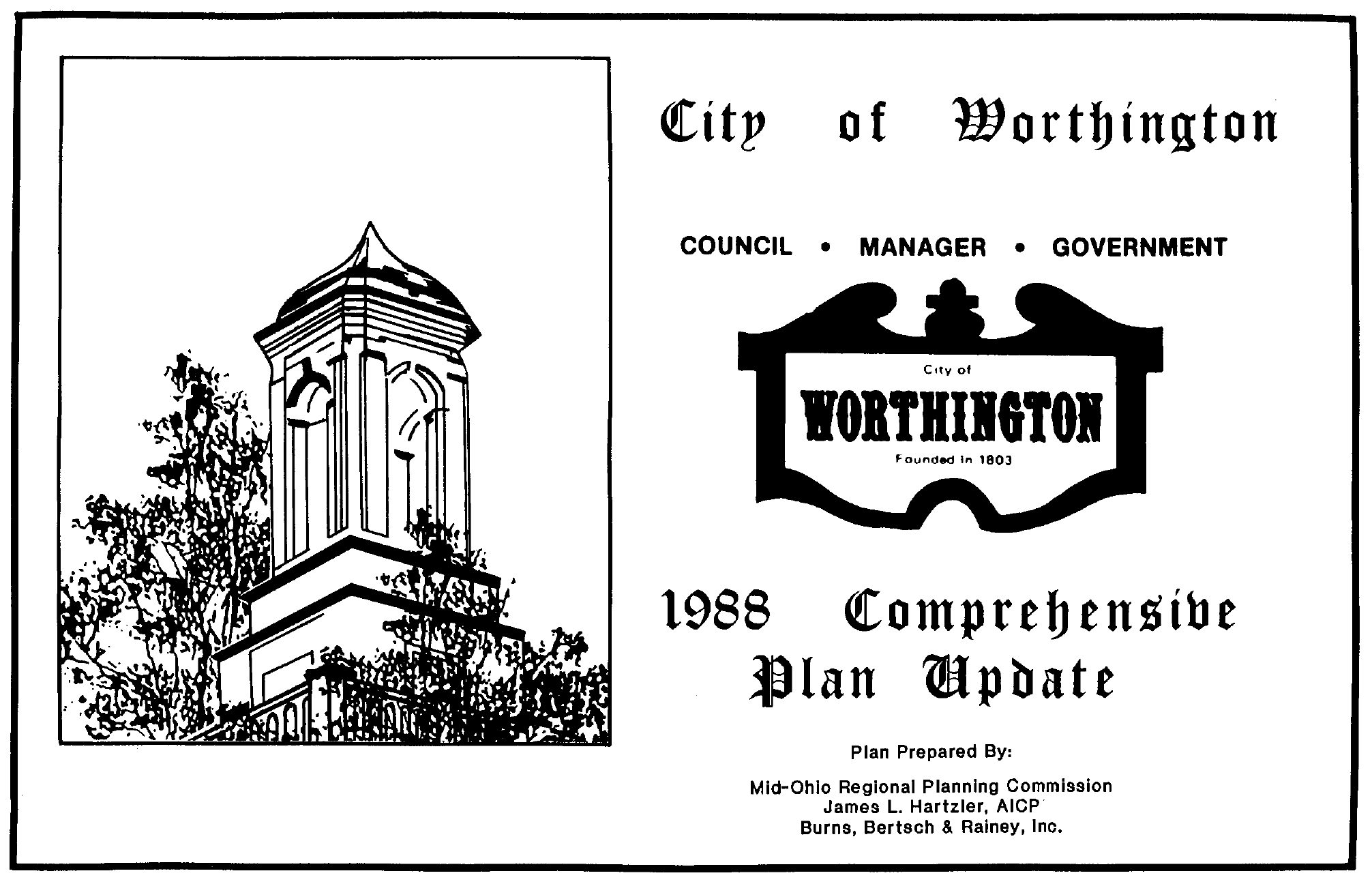Comprehensive Plan Update — Background and Principles Moving Forward

Dear Reader, You may have heard that your City Council has begun discussing whether and how to update our city’s Comprehensive Plan (Comp Plan, or CP). I wanted to share my thoughts on this undertaking since the impacts on our community are likely to be far-reaching—and there are many pitfalls to be avoided.
First, what is the Comprehensive Plan? It is, first and foremost, our City’s land-use guide. As a guide, it serves a non-binding regulatory function, conveying to our boards and commissions, city staff, landowners and developers, and the general public, a sense of what the City, at time of writing, believes are desirable uses for land throughout our community. The Comp Plan both assesses the present, and outlines possible future directions and outcomes. It does this within the context of our city’s history and character, current and prospective social and economic trends, and our perceived strengths and weaknesses. By analogy, a business may call this a Strategic Plan.
You can check out the current CP here: https://www.worthington.org/2077/Comprehensive-Plan-and-Amendments
When and how is it prepared? The first Worthington Comp Plan was adopted in 1966 (then broadly updated in 1988, again in 2005, and then with updates focused on the UMCH property in both 2014 and 2022). Each review and update process has varied, but the common theme is that the Comp Plan is based on the broad, long-term interests of the public, informed by a vision for the future that remains faithful to our past. Our Municipal Planning Commission (MPC), city staff, residents, and, at times, consultants, are all typically participants in the updating of our Comp Plan, with City Council providing overall direction, scope, process design, and, finally, approval.
Why update now? The Comp Plan itself states that it should be updated at least every fifteen years. In addition to this internal directive, the dynamic world we live in today provides abundant reasons as to why we would be wise to take stock, now, as to how we want our land and built environment to both reflect and shape our community moving forward. Hence the current initiative at Council.
Why does this matter? As we embark on this process, let’s remember that decisions about land use, unlike many public policy areas, are essentially irreversible. In a practical sense, once our landscape is altered—buildings demolished, trees torn down, and open space filled in with new buildings, designs, and densities—there is no going back. Further, our built environment has a pervasive and profound impact on how we live and who we are—yes, we shape the land and build the buildings, but then they shape us. In light of this significance, and the relative permanence of our decisions, great care should be brought to this undertaking.
~
So how should we approach and conduct the process of updating the Comp Plan? There are four basic principles that guide my thinking: 1) it must reflect the interests of the broad community, 2) it not be consultant-driven, 3) it must be comprehensive in scope, and 4) it must be long-term in perspective.
- The process and resulting plan must reflect the interests of the broad community, most notably the residents of Worthington, and not those of any special interest, financial or otherwise.(footnote 1) This may seem like an obvious thing to say, but I have observed that planning processes (and resulting plans) are too easily shaped by an underlying agenda of a particular interest or faction. When this happens, we are left with plans that are impractical or, worse, divisive in nature (because they are not grounded in broad public support). This is a wasteful and unproductive way to run a city. The antidote to this is a conscious and constant referral back to the general public interest. My touchstone question will be: “Is this what the broad community wants and supports?”
- This commitment to serve the broad public leads to my second guiding principle: the process should not be consultant-driven. This doesn’t mean that consultants can’t serve a useful purpose (they can), and may be hired to perform discrete functions (they probably will be). But this does mean that the responsibility, and accountability, for essential decisions and policy recommendations needs to rest squarely with your elected officials, not a third-party consultant. It is your City Council Members that are directly accountable to you, the voter.(footnote 2) It is hard to overstate the importance of this issue—keeping accountability with your elected officials—if we are to have a Comp Plan that recommends what the broad Worthington public truly supports.
- As the name suggests (Comprehensive Plan), the process for updating the Comp Plan needs to be comprehensive in scope, and not focused on a singular aspect of land use. Land use is divided into three basic categories: residential, commercial/industrial, and public. Each of these primary categories impact the others, and therefore need to be understood in relation to one another and be included throughout our deliberations. Further, in addition to these parcel-specific categories we might add qualitative factors that permeate land-use considerations, for instance, historic preservation, sustainability, social equity, etc. So as we begin our process of thinking about the whole city, and the interests of all, we ought to guard against focusing on a single aspect of land use. A holistic approach is basic to sound strategic thinking, whether we are talking about a city, a business, a household, or a singular life.
- Our thinking and the resulting Plan ought to be long-term in perspective. I say this for both practical and principled reasons. Practically, the general appeal of Worthington—why we want to live here, visitors choose to visit, and businesses decide to locate here—rests upon our attractive built environment, comprised of distinctive neighborhoods centered around an historic core, with abundant trees, ample greenspace and public venues, ringed by commercial/industrial facilities around the northern and eastern perimeters. To degrade this appealing sense of place, through short-sighted decisions to meet near-term demands, would be foolhardy, undercutting what is now a core strength. And as a matter of principle, I feel an obligation, not only to those who came before and built the Worthington I love, but even more so to those who will follow. We ought to think not only in years, but decades and beyond, preserving what is unique, distinctive, and irreplaceable.
~
So how do these four principles inform an effective planning process? What does “reflects the interests of the broad community, not consultant-driven, comprehensive in scope, and long-term in perspective” practically mean? How may Council proceed?
For starters, to me it means a series of open-ended discussions at public City Council meetings where all Members are able to share their thinking about the purpose and process of a Comp Plan update. The public is always welcome to make comments at these meetings as well. I expect these unstructured discussions to soon lead to proposals and decisions about the scope of the work we want to undertake, when and how to formally engage the public, the MPC, and any consultants to be hired. City staff will be contributing their expertise and experience throughout.
Further, in order to enable productive dialog throughout the community, I think it is essential that we have a shared set of basic facts that we can all reference, and that supports our thinking and deliberations. To achieve this, I will be proposing that we prepare relevant reports for each of the key factors and elements informing the Comp Plan: Housing, Commercial, and Public space, as well as the most significant qualitative factors cited above. These would be focused studies that would gather existing data, and generate new data where needed, focused on Worthington specifically.
For instance, related to housing, I would like to know not only how many apartments are in Worthington itself, but how many are there within a five and ten mile radius of our city center? And what are the current rents for ‘market rate” facilities? And where are the parcels in Worthington where additional housing could be built, and how might we incentivize that? Etc. And related to public space, what are the quantifiable impacts of parks on economic development as well as on public health? And so on. City staff would coordinate this process of developing reports, hiring consultants where needed in order to expedite and provide expert insight where appropriate, all on a fairly tight timeline and a modest budget.
Further, I’ll propose that concurrent with the preparation of reports, a working group, comprised of members of City Council, the MPC, the public, and staff, be formed to coordinate the process as it progresses.
~
So those are the basics at this moment. Council will be discussing the Comp Plan again at our first meeting in October. As stated, this is a complex, challenging, and important, undertaking for the future of our city. I invite any and all reactions to this post, and ask that you stay tuned in during the coming months as this process takes shape.
~
Footnotes:
1 Why do I cite “the residents” as deserving special attention? Because other interests—especially real estate developers—have full-time paid staff whose very job is to advance their interests, through development proposals, with City staff. Developer executives and management regularly talk with, meet with, and negotiate with City staff to advance their projects. Additionally, in the case of Worthington, a developer-aligned advocacy group, Building Worthington’s Future (BWF) has been formed by individuals (some residents, some non-residents) who have an interest in promoting real estate development in Worthington. Other interests, for example those advancing affordable housing policies, also have dedicated staff, often through non-profits, and an established network of advocacy groups working on their behalf with both City staff and the general public. I absolutely accept and respect the rights of any interest to lawfully work within the system. But who represents and advocates for the interests of the residents, the broad Worthington public? One would hope that elected officials would do so, but we too hear disproportionately from special interests. And yes, there are community groups that have arisen, for example WARD and PCPW, to advocate for what they believe are the interests of residents and the community at-large. But the members of these community groups are all volunteers, and generally non-specialists, and lack the financial and institutional status to wield the influence that is readily enjoyed by financial interests. This is why I emphasize that the residents need to be explicitly, consciously acknowledged as our primary interest in updating the Comp Plan (as well as in the conduct of regular city business). Our City Charter, Article 1, states that the City is the inhabitants, and we ought not to forget that.
2 In contrast to the public’s relationship with their elected officials, consultants can in practice serve to actually reduce public accountability (while at the same time advancing a specific agenda). Once hired, their presumed expertise becomes somewhat unassailable, and when their ideas are then formalized in a published plan it becomes all too easy for your city government to then cite the plan as an authority, without having to directly explain and defend the plan’s contents.

You must be logged in to post a comment.